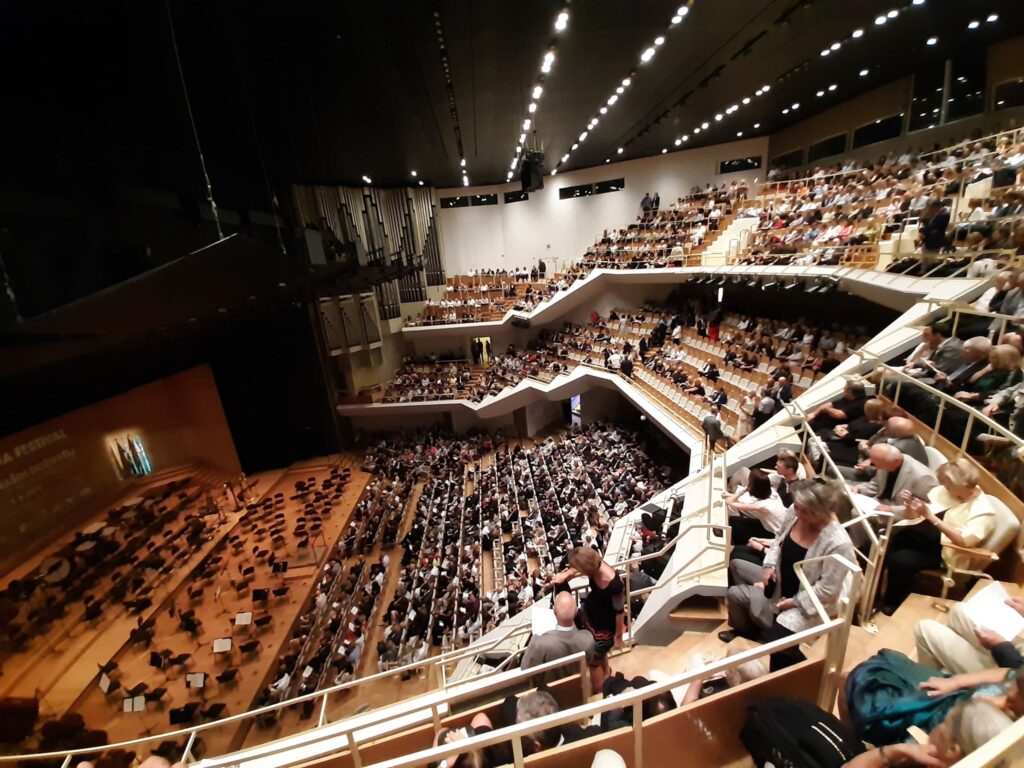The preparation for the jubileum for 30 years of Slovenian independence (23rd December 1990 referendum) has started pretty miserably, or we – should say – it corresponds to the spirit of right-wing populism, epitomised by the »great« leader Janez Janša. Janša has now become PM for the third time, confirming the saying that history repeats itself, but always in its own way.
The first time it was tragic, as Janša, in the light of his privatisation and flat tax reforms, actually helped to “build” the autonomous trade union movement and general strikes that in turn halted his reforms; then the second time it was farce – due to corruption charges and the announced neoliberal austerity, uprisings overthrew him after one year. Now, his third time in power is proving to be a disaster for society. We should highlight that prior to being PM for three times since independence, this very same Janez Janša had been one of the national heroes of the late 1980s, the figure that was imprisoned by a military court for being a whistleblower on military secrets. Janša was able to unite various forces of democratic civil society, and helped to forge nationalistic hegemony into Slovenian independence and the destruction of socialist Yugoslavia. Furthermore, he was openly implicated in various arms trade affairs (from the wars in the 1990s when he was Minister of Defense, to the Patria affair) and corruption scandals (he was imprisoned in 2013, but with the intervention of the right-tilting Constitution Court, in the name of being the champion of opposition, was released from prison).
Janez Janša, de facto appointed president of SDS (Slovenian Democrat Party) permanently, was from the late 1990s till the early 2010s seen as a typical representative of the neoconservative power. His politics has long been a mixture of historical revisionism that demonises both the socialist past and neoliberal austerity, with a strong Euro-Atlantic horizon. Janša was also one of the most skilled politicians that operated with affects in the public domain, mostly with fear and resentment against the forces of communist »continuity«, against foreigners and immigrants, and also regarding a failed transition conducted by the liberal party. His ideological boat started surfing on increasingly extreme right-wing waves throughout the refugee crisis in and after 2015 (for a very good and longer take on liberal authoritarianism, and peripheral capitalism in Slovenia see: http://www.europe-solidaire.org/spip.php?article54376).
2020 becomes yet again a year of Janez Janša, as PM Šarec failed to hold on to the centre-left coalition which, among other things, crumbled over the planned privatisation of the health system (starkly opposed by the Left party). The change of powers came just moments before the first wave of the coronavirus: the Slovenian Trump was successful at hegemonizing the power block together with ideological partners-in-crime: the Catholic-neoliberal NSI and adding two former government partners -the centre Party of the retired (DESUS) and Party of Moderate Centre (SMC). Janša received enough mandates in the parliament to form his third government since independence.
Janša’s staunch support of Trump (he hasn’t as of yet congratulated Biden, but tweets of stolen elections), and the governments of Hungary and Poland put him in a new axis constellation, one that might seriously influence Slovenian co-presidency of the EU next year. However, his celebration of 30 years of independence comes at the worst moment of the coronavirus crisis – Slovenia is at the moment the proud record holder of the highest death rate in the world and immense infection rates; much of the responsibility can be attributed to a very slow and inadequate response by the government. Not only did the stricter measures come far too late, but the time between the two waves was not used to improve the health system’s conditions, to hire more personnel, or invest in new hospital infrastructure and homes for the elderly.
Janša’s government was, however, extremely busy with its authoritarian agenda and coronavirus intervention packages relating to at least 7 main fields: first, there were some state subsidies for middle classes, some aid to tourist and restaurant business (see Breznik’s comment); second, attacks on the independence of health experts, and immediate replacements of the leadership of National Institute for Public Health; third, the government started its attack on critical segments of civil society, sparking the protests that have now been forbidden; fourth, dismantling the public media system and replacing it with the help of a Hungarian run media conglomerate that currently exists in parallel to the public system; fifth, the dismantling of the cultural sphere, already hard hit by the coronavirus situation, while promptly replacing key people at governmental agencies. This includes the eviction of spaces, such as Metelkova (see petition), a space that will be presumably used for the Museum for Independence; sixth, a major selloff of railway infrastructure and some media to the Orban empire, while the major investment went into modernisation of the army according to Trump/NATO dictates; seventh, a mass recruitment of coalition cadres within different state offices and agencies. We could make this list longer but these are Janša’s key investments into the solidification/strengthening of his power and that of his entourage.
In response to the authoritarian policies, there have been veritable mass grassroots protests since Spring until a few weeks ago, when they were forbidden. One should add that thanks to the insistent work on the ground, these protests did not turn into the loony protests present across Germany, mixing yoga and spa entrepreneurs, Christian fundamentalists, and extreme right-wingers. Besides the protests, more recently, a strong left-centre opposition (Social-Democrats, Left Party, LMŠ – former ruling party of PM Marjan Šarec, and SAB – Party of Alenka Bratušek) was formed. The new opposition aims to overthrow the government, and is currently establishing a bridge towards two small centrist parties, to turn their loyalty away from Janša (one, DESUS, seems to already be tilting away, but the other, SMC, will be more difficult). This official show will play out until Christmas, and until then we cannot expect anything else but dramatisation of coronavirus policies. I will not go into details now regarding how the opposition, if it aims for any substantial change, will need to finally leave the course of their common denominator as »anti-Janša«. The latter can be only the start of a more general platform and not part of a long infantile disorder of transitional centre-left ideology. We have reached the point of no return, if the opposition cannot – until next elections – come up with a stronger proposal of alternatives, Janša will not only keep returning in a more monstrous form, but will simply stay in power.
Back to the socialist future: 30 years of transfer from public to private investments
Invited to reflect on the light of nearing 30 years of (the) Slovenian (road to) independence and capitalist transition, I was struck by one major detail that will serve as a stark contrast with socialist transition. Currently the state is not investing in any social sector –neither in medical, cultural, or social, nor in any strategic infrastructural project. Let me juxtapose the current lack of vision and planning with the decade of the mid 1960s to late 1970s in the socialist republic of Slovenia (for details on the period see my book Partisan Ruptures ). We will come to some stark contrasts. A major investment into the hospital system (amounting to what would presently be at least some two hundred million EUR) came with the building of a major hospital, finished in 1975. Cankarjev Dom, a major cultural centre that was the most prominent and biggest investment into Slovenian cultural infrastructure of the century, would be finished a few years later, in 1982. To this we can add the extensive funding and planning of social housing (both modernist, and other), the building of schools and kindergartens, sports infrastructure, smaller cultural spaces, and everything that was regarded as vital for the social reproduction of self-management.


From the perspective of large social investments in that decade of socialism and the three last decades of investments after the independence of Slovenia, we will see not only the processes of denationalisation and de-socialisation with a process of gradual privatisation, but also a strong investment in the private infrastructure that will no longer contribute to the redistribution of value, but rather, to gaining extra profits from construction and tourist businesses. The rupture is pretty clear.
Ljubljana seems to thrive on its green infrastructure and shine, especially for tourism, however we ought not to forget that the major infrastructure for this was completed in the times of socialism. The last major investments in the capital were made to embellish the city centre, but behind that embellished facade actually lay massive interests of privatised infrastructure that is focused on luxury private property housing, hotels, bureaucratic buildings that now remain half empty. Private construction occurred über alles in Laibach, where the mayor of the city, Zoran Janković, rests in power for more than 14 years (elected five times).
Obviously, if comparing only social investments one could easily arrive at idealisation of the <<good old times>> of socialism, so one should immediately add that there were also some very badly planned investments in the socialist period. For example, the decision to invest only in highway infrastructure instead of improving the railway and public transport system was something that started during that period, and became worse in the capitalist transition. Despite what I have described as the socialist leadership’s support for major social investments, I would argue that it was the highway and its stark inscription of “auto-mobility” that became the major metaphor of socialist development in the late 1960s and 1970s, and a proper image of market reform. Highway has always been a deeply anti-ecological fossil fuelled road, where a political horizon of nationalism and liberalism became most neatly interwoven. It was here that another political-economic post-socialist vision of the future and fracture of Yugoslav self-management and political system began in the early 1970s. The latter already announced the break-up of Yugoslavia, the autonomisation of republican leaderships and protocapitalist transition that entered a much more intense phase after independence.
In the light of 30 years of independence, lack of vision and investments yesterday and today, and the eternal return of Janez Janša, there is really not much to celebrate. Rather, the third Bonapartist return of Janša could be seen as a trigger point that ends the nationalist fairy tale. It can remind us yet again that it is high time to launch a political counter-offensive opened to an ecological and socialist future.

Gal Kirn holds a PhD from the University of Nova Gorica in Slovenia. He has since worked, among other places, at the Berlin Institute for Cultural Inquiry, Humboldt University in Berlin and at TU Dresden. He has been active in Workers-Punks University and various leftist projects. His book Partisan Ruptures was published by Pluto Press in 2019, and The Partisan Counter-Archive by De Gruyter in 2020. He is currently a Visiting Professor at the Cultural History program at University of Nova Gorica.

